1. Bus transit malls--Portland, Minneapolis (Nicollet Mall), Denver
2. Circulator bus services in various iterations--the latest have modern, more comfortable buses, better branded services, and more frequent headways (DC, Baltimore)
3. Various lane priority schemes
4. Monorails (earlier truncated line in Seattle, more modern service in Las Vegas, Singapore, Kuala Lumpur and other systems in Asia--Nigel, being in New Zealand, has experience with these systems too, which mostly have a limited number of stations)
5. Heritage streetcar systems (McKinney Street, Dallas, Little Rock, Tampa, etc.)
6. Modern streetcar systems (Portland, Seattle, plans for Washington, DC and Arlington, Virginia and many other cities)
Similar to how bus rapid transit is being marketed, by distinguishing the circulator buses with more modern, attractive, comfortable buses versus more traditional, value engineered buses, bus service, at least in the context of circulator service (but not traditional bus service), has been repositioned as a premium service.
Images from the first Bob Firth article, which is primarily a set of illustrations explaining what a Circulator does.
Bus transit malls are good for focusing transit services and making people aware of where to go to catch the bus, but they don't always work out on placemaking considerations, given the noise and exhaust and dominance of the streetscape by many large vehicles. This wasn't helped by early iterations which had "heavy" bus shelters which also overwhelmed the streetscape.
Top photo: Nicollet Transit Mall, Minneapolis. Photo by Jerry Holt of the Minneapolis Star Tribune. Bottom photo: Old Portland bus mall shelters. Flickr photo by Jason McNuff.
Focused transit services downtown often start with transit malls, which serve both intra-city and inter-city functions. Circulator bus systems are the next generation of this kind of service, more focused on intra-city service, and a lot cheaper to implement than streetcars.
The question remains however on whether or not bus-based Circulator systems can spark economic development the way that fixed rail transit does. It will be interesting to see how this works in Baltimore as opposed to DC, where it's harder to separate out the impact of subway service on economic development vs. any impact that might come from enhanced bus service.
 Top: Las Vegas Monorail photo on Flickr by Richard Pilon. Detroit People Mover photo below by cmu chem prof from Flickr.
Top: Las Vegas Monorail photo on Flickr by Richard Pilon. Detroit People Mover photo below by cmu chem prof from Flickr.
People Movers and Monorails haven't really worked out in terms of sparking economic development. The Detroit People Mover never had that much ridership, while the Miami Metromover, with 22 stations, gets more than 30,000 daily riders. The Las Vegas monorail system went through bankruptcy and the Seattle one is truncated, and the above-ground systems, while not impeded by traffic, can be a drag on the viewshed.
The Las Vegas monorail may become successful over time, because of people's desires to get between various casinos in the city--on the other hand, if people stay within their hotel-casino complexes, maybe there isn't that much demand for this kind of service. Given that roughly 2,000 people ride the the monorail daily, maybe that's the case.
Maybe the relative lack of success has to do with their being in the air, just as the skywalks in Minneapolis, while successfully moving people between buildings in bad weather, end up removing people from the street, so success comes at the expense of vitality at the street level.
Streetcars (and bus-based circulators) integrate better into the built environment than monorails and people movers, but their in-street operation creates a lot of opposition (at least by motor vehicle operators) who see the addition of streetcars as a competitor for scarce street space, even though by comparison a streetcar can carry 100 or more people in the same space as 3-5 cars.
Heritage streetcars are a variant, more focused on tourism and out-of-region visitors rather than repositioning an area within the regional landscape for residential choice and commerce. The Little Rock streetcar seems to have had more success in terms of sparking economic development than the Tampa equivalent. Likely this is due to greater focus and integration with economic development revitalization planning in Little Rock versus the planning in Tampa, which provides service to Ybor City, a major entertainment and tourist destination.
Streetcar at the River Market (a newly constructed public market which is also very successful in its own right) in Little Rock, Arkansas. Flickr photo by Skyline Scenes.
Articles about streetcars in Portland and Seattle and how they respectively helped focus redevelopment of the Pearl District in Portland and the South Lake Union district in Seattle, supporting billions of dollars of economic development, are numerous. The experiences there demonstrate that when intra-city transit systems are developed in a purposeful way to promote economic development, placemaking, and the repositioning of the center city as a residential and business location of choice, they can have incredible return on investment.
--
Understanding the Impacts of Transitways The Hiawatha Line: Impacts on Land Use and Residential Housing Value, Center for Transportation Studies, University of Minnesota,
research brief,
full document
 Portland Streetcar at Jameson Square. Image from Portland Ground. Note that an ongoing discussion on this topic with Nigel Foster helped shape this entry.
Portland Streetcar at Jameson Square. Image from Portland Ground. Note that an ongoing discussion on this topic with Nigel Foster helped shape this entry.


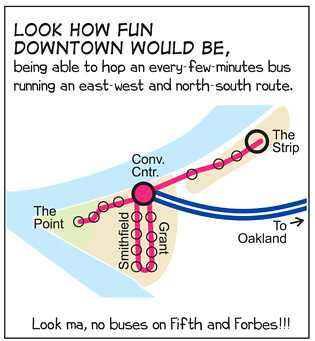
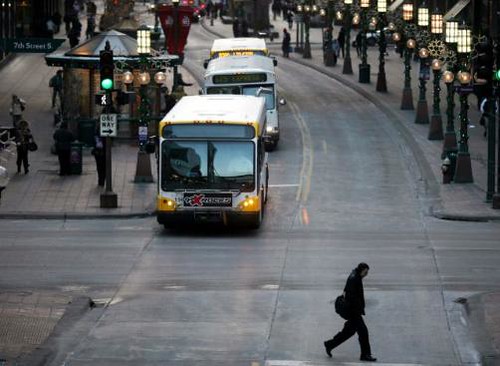
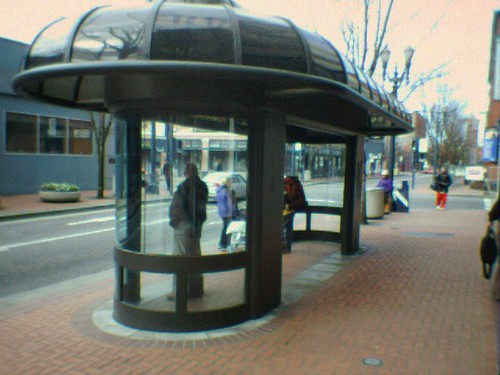
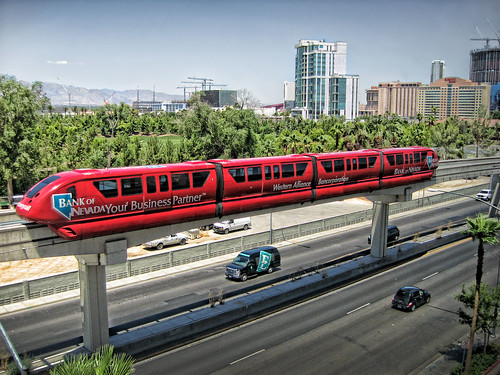
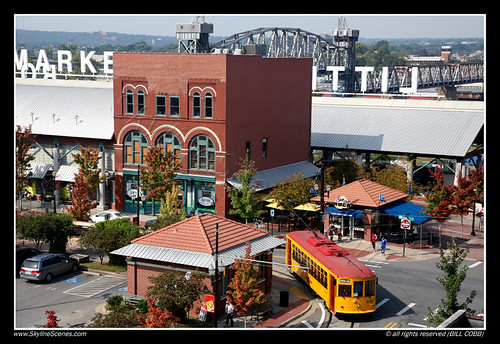



4 Comments:
this Guardian bike blog post makes a distinction between commute bicycling over longer distances and intra-district cycling
https://www.theguardian.com/environment/bike-blog/2018/dec/17/londons-new-official-plan-for-cycling-is-bold-but-has-a-major-flaw
idership of Milwaukee's streetcar, The Hop, increased by more than 30% in 2023
https://www.jsonline.com/story/news/local/2024/03/07/the-hop-milwaukee-ridership-increased-by-more-than-30-in-2023/72792820007
During 2023, 494,445 people rode the streetcar, up from 261,303 in 2020. The Hop launched in 2018 with the M-Line, which runs in a loop through eastern downtown to the edge of the Historic Third Ward.
From 2022 to 2023, Hop ridership increased more 30%.
Introduction of the new L-Line with service to the Couture high-rise apartments and connection to the Lakefront is predicted to continue to increase ridership into 2024, said spokesperson Mark Rosenberg.
Hop ridership surged during Milwaukee's Bastille Days Festival and the Harley Davidson Homecoming Festival. Ridership averaged 4,557 riders per day from July 13-16, including 6,886 passengers on Saturday, July 15. That stood as the fourth-highest ridership on record for the Hop behind July 12-13, 2019 during pre-COVID Bastille Days, and Nov. 3, 2018 during the streetcar's grand opening.
https://www.freep.com/story/news/local/michigan/detroit/2024/03/12/detroit-people-mover-expansion-possibilities/72886696007/
Detroit People Mover gets a new look from city planners
When Detroit Mayor Mike Duggan mentioned a reconfiguration as a possibility for the Detroit People Mover during the Detroit Policy Conference in January, the suggestion might have caught more than a few people off guard.
The People Mover, after all, hasn’t always been seen for its potential or its flexibility.Critics often offered it as a cautionary tale to boosters of the QLINE when the streetcar opened to the public in 2017 on Woodward Avenue.
The limits of the People Mover's 2.9-mile public transit loop that doesn’t directly serve key sports venues and other hot spots that have grown up since it launched almost 37 years ago appeared, well, obvious to some.
But the People Mover is now getting renewed consideration for what it does well and what it could mean for downtown Detroit and the surrounding areas in the future.
City and transit leaders are actually rethinking what the system could be. Is expansion a possibility? Perhaps, although don’t expect any changes soon.
Robert Cramer, the general manager of the Detroit Transportation Corp., the entity that operates the system, said he’s looking to secure funding for a study in the coming months to “scenario plan” for future opportunities.
In the short term, Bryant said, better integration with Detroit’s current public transit offerings needs to be the focus, making it easier to connect to Detroit Department of Transportation and QLINE stops, perhaps adding scooters and electric bikes at People Mover stations if they aren’t already served that way.
Among the changes that have rolled out already for the People Mover is free fares. The system, which formerly charged 75 cents for a basic fare, is free at least for the remainder of this year.
Cramer noted that it would have cost millions of dollars to upgrade the decades-old equipment to meet current expectations for accepting fares.
In 2016, before the demolition of the Joe Louis Arena and the alterations to the Detroit auto show timing over the last several years, ridership was listed at 2.2 million.
A December announcement on the free fare program noted that ridership, at approximately 672,000, was at 42% of pre-pandemic levels, but that it represented a doubling over 2022.
Cramer noted that on a recent Saturday, without any special events downtown, the system had almost 8,000 riders.
And this year, with major events on the horizon, it's expected to continue the trend, with a goal of a 50% ridership increase.
https://www.jsonline.com/story/money/real-estate/commercial/2025/10/27/what-to-know-about-milwaukees-streetcar-and-downtown-property-values/86820728007/
https://www.jsonline.com/story/money/real-estate/commercial/2025/10/29/13-commercial-developments-that-popped-up-near-milwaukee-streetcar/86946130007/
https://archive.ph/HkmRq
Post a Comment
<< Home